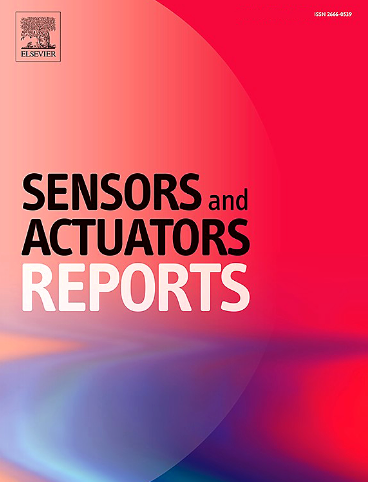Development of a low-cost flexible potentiometric detector and its integrated system for electrochemical sensing of electrolytes in human sweat
IF 7.6
Q1 BIOTECHNOLOGY & APPLIED MICROBIOLOGY
引用次数: 0
Abstract
In the current era of wearable electrochemical sensors, there is a growing demand for a potentiometric detector that exhibits exceptional flexibility, comfortable wearability, and stability in electrolyte sensing. The present study designs and validates a low-cost (costs 17 dollars), small area (size of 4 × 5.8 cm2), highly flexible potentiometric detector, which is facilitated through the utilization of cost-effective components, flexible printed circuit boards, and Bluetooth low energy modules. Electrolyte electrochemical detection has been achieved by integrating wearable microfluidic electrochemical sensing devices and establishing wireless communication with smartphone applications. The efficacy of this designed flexible potentiometric detector is demonstrated in sodium and calcium ions detection, indicating comparable results to those obtained from commercial electrochemical workstations. By comparing the detection results with those obtained from ion chromatography, the flexible potentiometric detector is proved to be useful for a real-time, on-body quantitative analysis of various ion concentrations in human sweat.

低成本柔性电位检测器及其集成系统的研制,用于人体汗液中电解质的电化学传感
在当今可穿戴电化学传感器的时代,对电位检测器的需求不断增长,该电位检测器在电解质传感方面具有卓越的灵活性,舒适的可穿戴性和稳定性。本研究设计并验证了一种低成本(成本为17美元)、小面积(尺寸为4 × 5.8 cm2)、高柔性的电位检测器,通过使用具有成本效益的组件、柔性印刷电路板和蓝牙低功耗模块来实现。通过集成可穿戴微流体电化学传感装置,并与智能手机应用程序建立无线通信,实现了电解质电化学检测。设计的柔性电位检测器在钠离子和钙离子检测中的有效性得到了证明,其结果与商用电化学工作站的结果相当。通过与离子色谱法检测结果的比较,证明柔性电位检测器可用于人体汗液中各种离子浓度的实时定量分析。
本文章由计算机程序翻译,如有差异,请以英文原文为准。
求助全文
约1分钟内获得全文
求助全文
来源期刊

Sensors and Actuators Reports
Multiple-
CiteScore
9.60
自引率
0.00%
发文量
60
审稿时长
49 days
期刊介绍:
Sensors and Actuators Reports is a peer-reviewed open access journal launched out from the Sensors and Actuators journal family. Sensors and Actuators Reports is dedicated to publishing new and original works in the field of all type of sensors and actuators, including bio-, chemical-, physical-, and nano- sensors and actuators, which demonstrates significant progress beyond the current state of the art. The journal regularly publishes original research papers, reviews, and short communications.
For research papers and short communications, the journal aims to publish the new and original work supported by experimental results and as such purely theoretical works are not accepted.
文献相关原料
公司名称
产品信息
阿拉丁
Sodium ionophore X
阿拉丁
sodium tetrakis [3,5-bis(trifluoromethyl)phenyl] borate (Na-TFPB)
阿拉丁
polyvinyl chloride (PVC)
阿拉丁
bis(2-ethylhexyl) sebacate (DOS)
阿拉丁
polyvinyl butyral (PVB)
阿拉丁
Calcium ionophore
阿拉丁
tetrahydrofuran
阿拉丁
sodium chloride (NaCl)
阿拉丁
citric acid
阿拉丁
calcium chloride (CaCl2)
阿拉丁
potassium chloride (KCl)
阿拉丁
ammonium chloride (NH4Cl)
阿拉丁
glucose
阿拉丁
urea
 求助内容:
求助内容: 应助结果提醒方式:
应助结果提醒方式:


